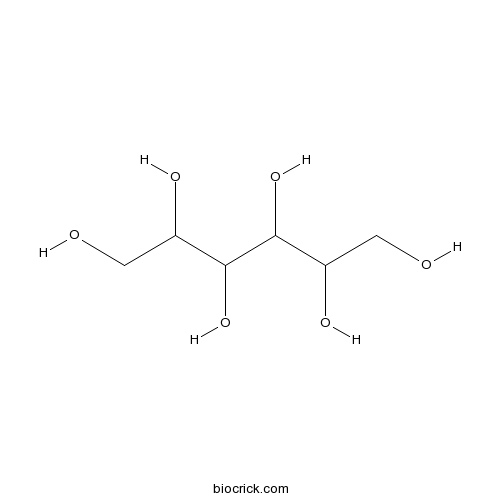Bidens biternata
Bidens biternata
1. The products in our compound library are selected from thousands of unique natural products; 2. It has the characteristics of diverse structure, diverse sources and wide coverage of activities; 3. Provide information on the activity of products from major journals, patents and research reports around the world, providing theoretical direction and research basis for further research and screening; 4. Free combination according to the type, source, target and disease of natural product; 5. The compound powder is placed in a covered tube and then discharged into a 10 x 10 cryostat; 6. Transport in ice pack or dry ice pack. Please store it at -20 °C as soon as possible after receiving the product, and use it as soon as possible after opening.
Natural products/compounds from Bidens biternata
- Cat.No. Product Name CAS Number COA
-
BCN2205
D-Mannitol69-65-8
Instructions

Freeze dried extracts of Bidens biternata (Lour.) Merr. and Sheriff. show significant antidiarrheal activity in in-vivo models of diarrhea.[Pubmed: 27664442]
Diarrhea remains one of the main killers of children aged below five years. Traditional antidiarrheal remedies form a potentially viable source of novel low cost efficacious treatments in low resource settings. There is therefore a pressing need to scientifically evaluate these remedies.
[Analysis of fingerprint and bioactive components of Bidens biternata by HPLC].[Pubmed: 23236821]
To establish HPLC fingerprint of Bidens biternata from different habitats and determine the contents of hyperoside, isoquercetin, astragalin and bipinnatapolyacetylpside.
Phytochemical investigation of Bidens biternata (Lour.) Merr. and Sheriff.--a nutrient-rich leafy vegetable from Western Ghats of India.[Pubmed: 22538981]
Bidens biternata, belonging to the family Asteraceae, is an erect annual herb, up to 1 cm in height, and a widespread weed of cultivated areas. This plant is common, particularly in the Western Ghats regions of Kerala state in India. It is used as a leafy vegetable by the Paniya and Kattunaayika tribes of Waynadu Districts in Kerala and also to cure hepatitis, cold, cough, dysentery, etc. The multiplication and utilization of this leafy vegetable will help to overcome the nutritional deficiency problem and also to maintain the biodiversity. For effective biochemical analysis, plant extract was taken using different solvents. Various phytochemicals like reducing sugar, glycosides, flavonoids, alkaloids, tannins, steroids, terpenoids, coumarins, saponins, anthraquinones, phlobatannins and iridoids were estimated. Different nutritional factors like total carbohydrates, total proteins, total reducing sugar, different amino acids, free fatty acids, crude fibre, lipids, total moisture content, vitamins, etc. were tested by standard estimation methods. Anti-nutritional factors like phytic acid, total phenol, tannic acid, etc., were also estimated. Micronutrients and different pigments were quantified. The present studies revealed that this wild leafy plant has numerous nutritional factors with a low level of anti-nutritional factors. Therefore, this nutritive herb with diverse health-promoting compounds can be effectively utilized to overcome the nutritional deficiency problem around the globe.
Bidens identification using the noncoding regions of chloroplast genome and nuclear ribosomal DNA.[Pubmed: 19083787]
Bidens pilosa L. is a plant producing barbed fruits which, due to its method of seed dispersal, is commonly found during forensic investigations. In Taiwan there are three varieties of the species, radiata, minor and pilosa. Fragments of these three varieties are difficult to differentiate by traditional morphological characteristics and until now little is known of their genetic composition. To discover genetic polymorphisms among these varieties, five loci within the nuclear and chloroplast genomes were screened. A total of 161 specimens were used in this study comprising different geographical populations. Seven samples of Bidens biternata were included as an out-group control. DNA fragments of all samples at the trnL intron and trnL-trnF IGS loci of the chloroplast genome, internal transcribed spacer (ITS1 and ITS2) and the 5.8S of nuclear ribosomal DNA (nrDNA) were amplified and sequenced. There were 3, 4, 20, 12 and 9 sequence types at these five loci, respectively. The sequence types for any locus of trnL intron, ITS1, ITS2 and 5.8S were found to be useful markers to identify Bidens biternata and B. pilosa. The resulting 84 haplotypes at the 5 loci could differentiate the var. radiata from the varieties of B. pilosa with only the exception of 1 type. The genetic polymorphisms can be used when comparing botanical remains to identify the variety of B. pilosa present at a crime scene.


